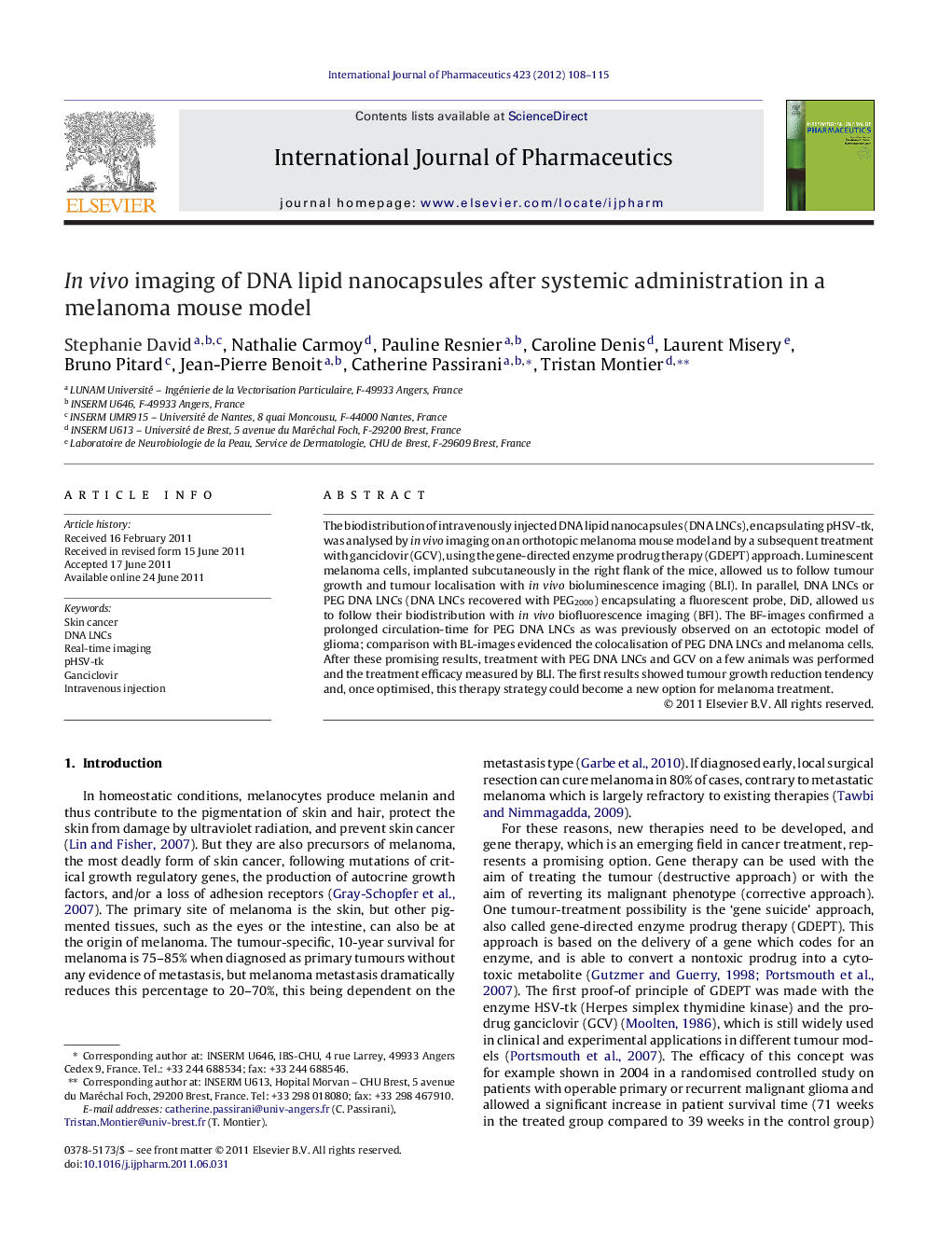| Article ID | Journal | Published Year | Pages | File Type |
|---|---|---|---|---|
| 2503053 | International Journal of Pharmaceutics | 2012 | 8 Pages |
The biodistribution of intravenously injected DNA lipid nanocapsules (DNA LNCs), encapsulating pHSV-tk, was analysed by in vivo imaging on an orthotopic melanoma mouse model and by a subsequent treatment with ganciclovir (GCV), using the gene-directed enzyme prodrug therapy (GDEPT) approach. Luminescent melanoma cells, implanted subcutaneously in the right flank of the mice, allowed us to follow tumour growth and tumour localisation with in vivo bioluminescence imaging (BLI). In parallel, DNA LNCs or PEG DNA LNCs (DNA LNCs recovered with PEG2000) encapsulating a fluorescent probe, DiD, allowed us to follow their biodistribution with in vivo biofluorescence imaging (BFI). The BF-images confirmed a prolonged circulation-time for PEG DNA LNCs as was previously observed on an ectotopic model of glioma; comparison with BL-images evidenced the colocalisation of PEG DNA LNCs and melanoma cells. After these promising results, treatment with PEG DNA LNCs and GCV on a few animals was performed and the treatment efficacy measured by BLI. The first results showed tumour growth reduction tendency and, once optimised, this therapy strategy could become a new option for melanoma treatment.
Graphical abstractFigure optionsDownload full-size imageDownload as PowerPoint slide
